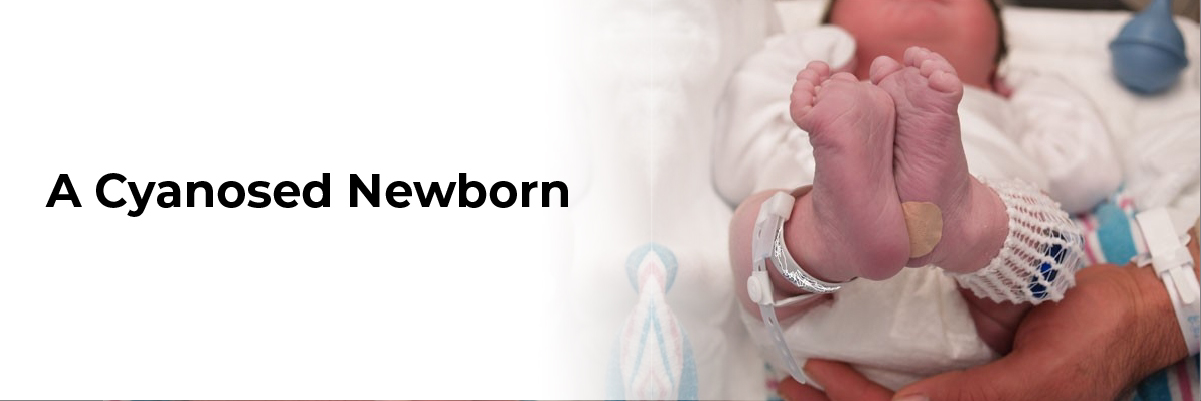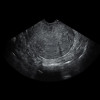
 IJCP Editorial Team
IJCP Editorial Team
A Cyanosed Newborn
A report describes a case of a female neonate who got delivered (via elective cesarian section) at term following an unremarkable prenatal course with normal fetal ultrasound. Her Apgar score was nine at the first and fifth minute, and the birth weight was 2525 g, with a normal body length and head circumference.
On the 8th day of life, she showed central cyanosis during crying. Physical examination revealed the nondysmorphic as cyanotic, warm, and well perfused. Her vitals were 36.8°C(body temperature), 193 beats/min(heart rate ), 45 breaths/min( respiratory rate), 77% and 81% (pre and postductal oxygen saturations, respectively), and 93/45 mmHg (blood pressure) without gradient between upper and lower extremities.
Chest examination revealed clear breath sounds bilaterally without retractions. Cardiovascular examination showed quiet precordium, a regular rhythm with normal S1 and S2, without murmurs, and palpable femoral pulses. Abdomen examination was normal. Her muscle tone was appropriate.
Her Arterial blood gas had 7.39 pH, 42 mmHg pO2, 32 mmHg pCO2, and 8.7 mmol/L arterial lactate. She failed the hyperoxia test on CPAP FiO2 1.0 (pO2 66 mmHg).
She was evaluated for sepsis and initiated antibiotic therapy. Her chest X-ray showed a mildly enlarged boot-shaped cardiac silhouette with absent pulmonary artery shadows, oligemic lung fields, and no focal pathology. Electrocardiogram (EKG) revealed normal sinus rhythm, QRS axis of +20°, and no right ventricular forces in V1-V2. Transthoracic ECHO revealed an unobstructed antegrade flow into the hypoplastic right ventricle and outflow without evident restriction or insufficiency; a significantly echogenic tricuspid valve with inferior displacement of anterior and septal leaflets into the ventricle and absent tricuspid valve regurgitation; right atrium moderately dilated with right-to-left shunting through the foramen ovale; no flow through the ductus arteriosus.
She received a diagnosis of Ebstein's anomaly.
She was not given Prostaglandin E1 (PGE1) therapy due to the presence of forwarding flow through the pulmonary valve and the oxygen saturation above 80% on CPAP FiO2 0.45. Her Arterial lactate level normalized within 24 hours from the admission.
The physicians terminated her respiratory support. She remained on room air with oxygen saturations in the 80 s without desaturations. After a period of stabilization, she resumed oral feeding and was able to nipple ad libitum.
Her blood culture remained negative; thus, she did not receive any antibiotics after 48 hours.
She did not require surgical intervention and was discharged home on the 4th day of admission. Two-month follow-up revealed her growth and development to be suitable for her age, and her oxygen saturations were in the high 80s on room air.
Source: Izraelit A, Ten V, Krishnamurthy G, Ratner V. Neonatal cyanosis: diagnostic and management challenges. ISRN Pediatr. 2011;2011:175931. Doi: 10.5402/2011/175931. Epub 2010 Dec 29. PMID: 22482063; PMCID: PMC3317242.

IJCP Editorial Team
Comprising seasoned professionals and experts from the medical field, the IJCP editorial team is dedicated to delivering timely and accurate content and thriving to provide attention-grabbing information for the readers. What sets them apart are their diverse expertise, spanning academia, research, and clinical practice, and their dedication to upholding the highest standards of quality and integrity. With a wealth of experience and a commitment to excellence, the IJCP editorial team strives to provide valuable perspectives, the latest trends, and in-depth analyses across various medical domains, all in a way that keeps you interested and engaged.




















Please login to comment on this article